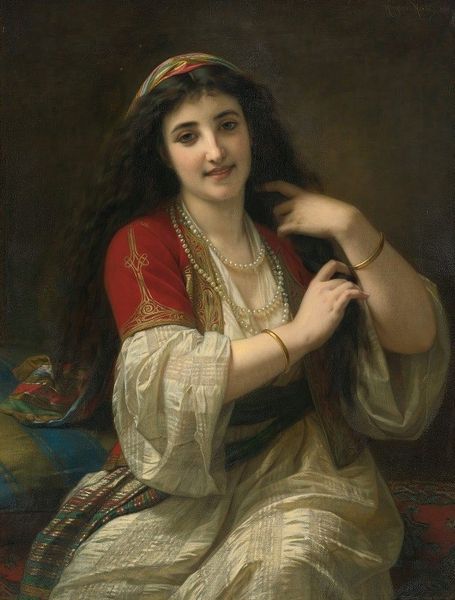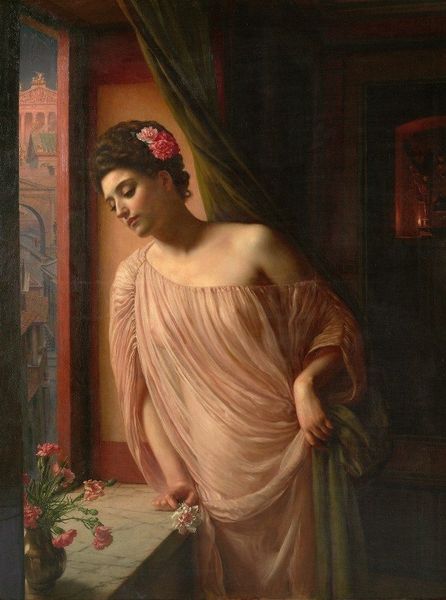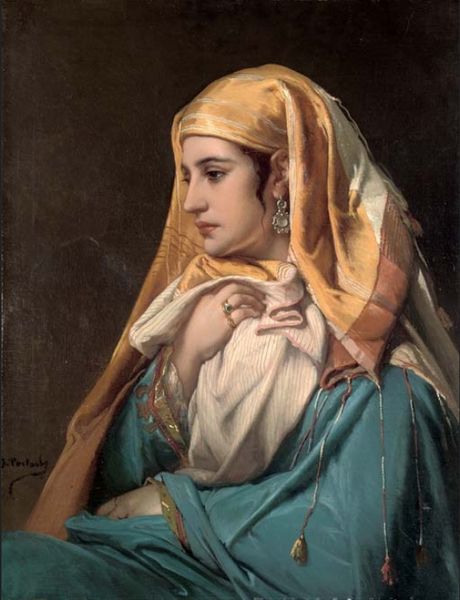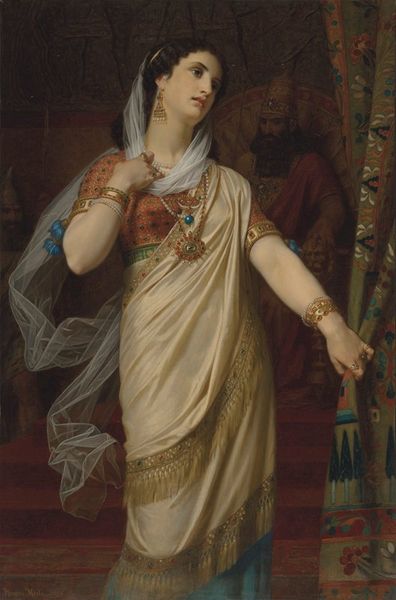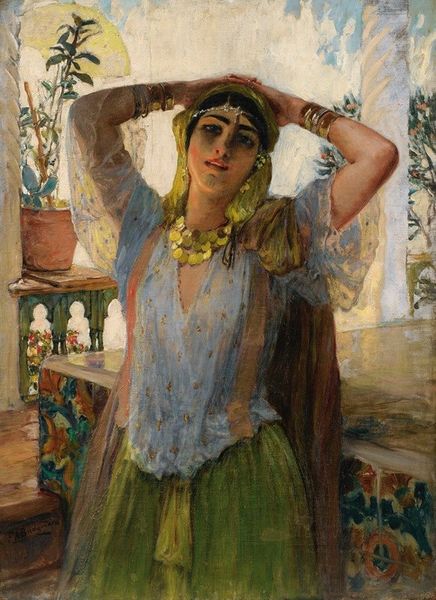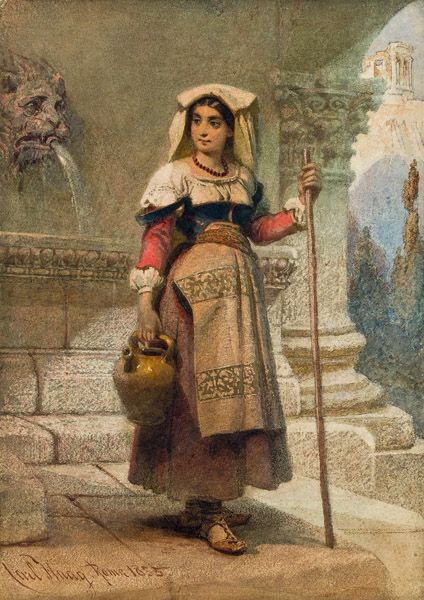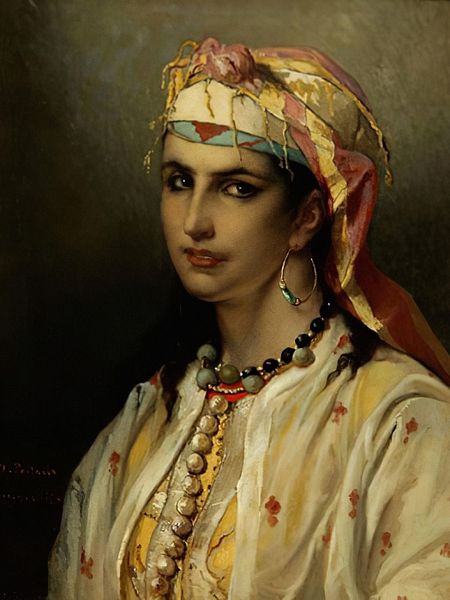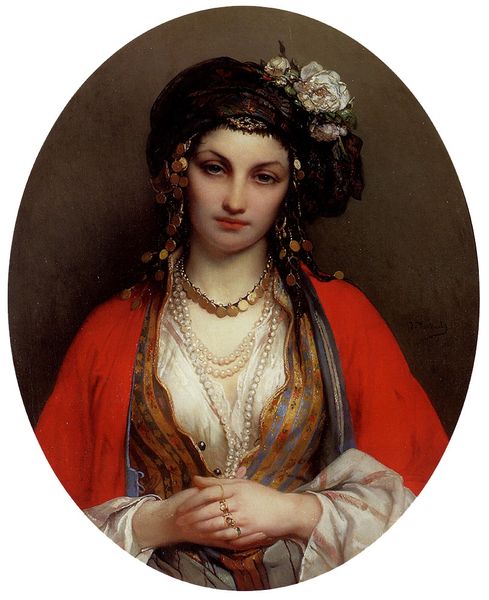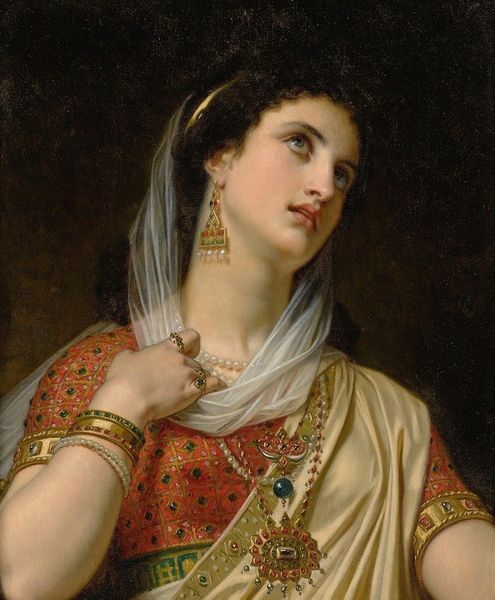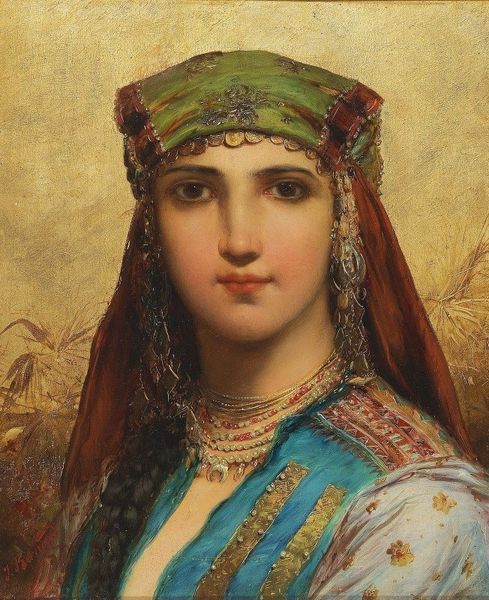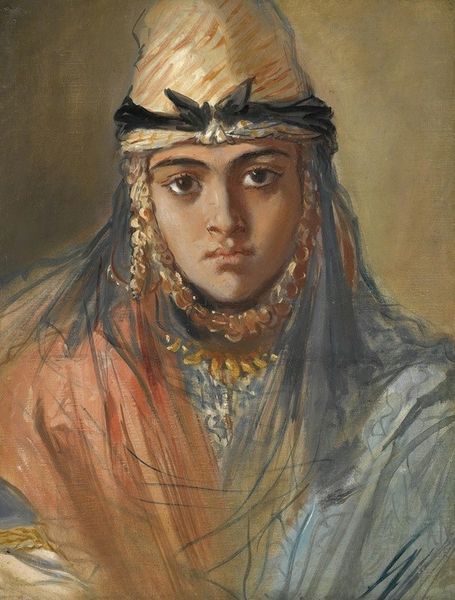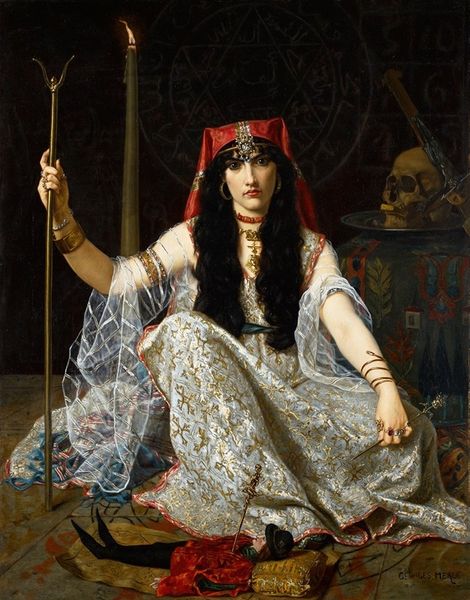
The Unwelcome Companion (A Street Scene in Cairo) 1872
0:00
0:00
johnwilliamwaterhouse
Towneley Hall Art Gallery and Museum, Burnley, UK
Dimensions: 49.5 x 59.1 cm
Copyright: Public domain
Curator: "The Unwelcome Companion (A Street Scene in Cairo)", painted by John William Waterhouse in 1872, offers us a glimpse into the artist's interpretation of the Orient. It's an oil painting, currently housed here at Towneley Hall. What are your first impressions? Editor: She seems burdened, yet resolute. There's a world-weariness in her eyes that belies her youth. The architectural elements, vaguely Moorish, and the foliage suggest an exotic setting, but the true subject feels profoundly personal, inwardly turned. Curator: Indeed. Waterhouse was a master of Romantic Orientalism. While he never actually visited the Middle East, his art evokes a potent sense of place. The crescent moon jewelry feels particularly evocative, and then that rather severe almost somber color palette that, nevertheless, carries a warmth and deep feeling. Editor: The moon, historically a symbol of feminine power, transition, and hidden knowledge, is here multiplied, suggesting an emphasis on those symbolic realms. Also, note how her red outer robe contrasts sharply with the muted tones around her. This draws us to her, but then we see the somber expression. The colors deepen that complexity, and suggest passion checked, experience that she did not perhaps welcome, yet, endures. Curator: Exactly. And the shadows? See how they dance, just ever so slightly on the stone wall? I think those details are vital for understanding Waterhouse, how carefully he layered the symbolism. Her posture too seems indicative; alert but guarded, poised for action or retreat, never entirely still. I'd wager she had something happening to her at this very moment that made this all so unforgettable. Editor: Her lowered gaze hides much, but it also invites speculation. In many visual languages, averted eyes can indicate shame, modesty, or defiance depending on the wider narrative. The fact she averts our direct gaze empowers her by withholding her inner thoughts. She is the knower, not us, as outside viewers of that reality. She possesses a secret perhaps? Curator: The idea that she controls the narrative, yes! Which then speaks, doesn’t it, to Waterhouse’s Orientalism? Perhaps instead of a simple projection of European fantasy, the painting acknowledges this woman's power in her own realm. Her beauty and resilience are apparent. It does subvert assumptions perhaps… Editor: Ultimately, that feeling of untold stories hovering in the air is what resonates most deeply. It invites you to see her as the heroine of her own rich history.
Comments
No comments
Be the first to comment and join the conversation on the ultimate creative platform.


